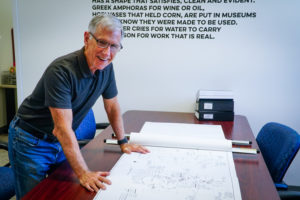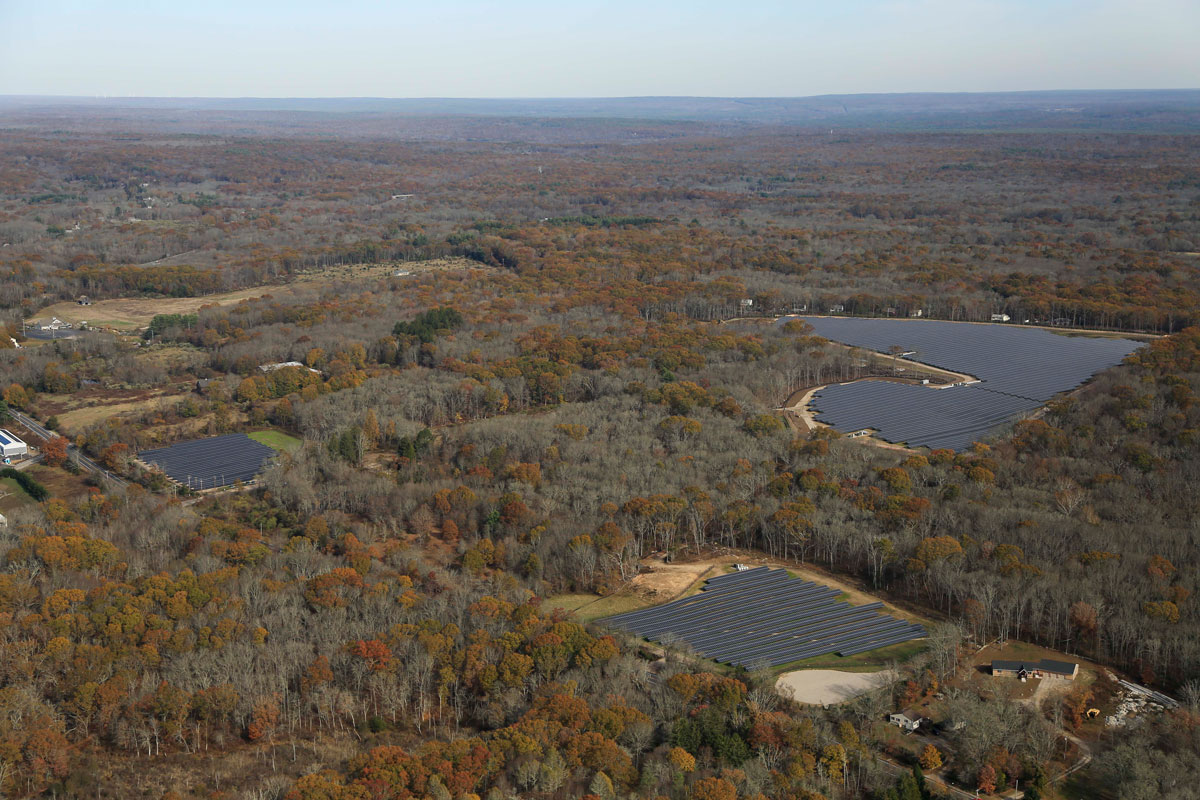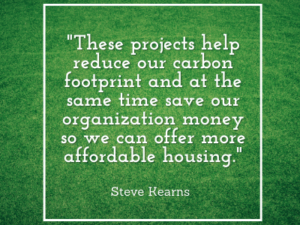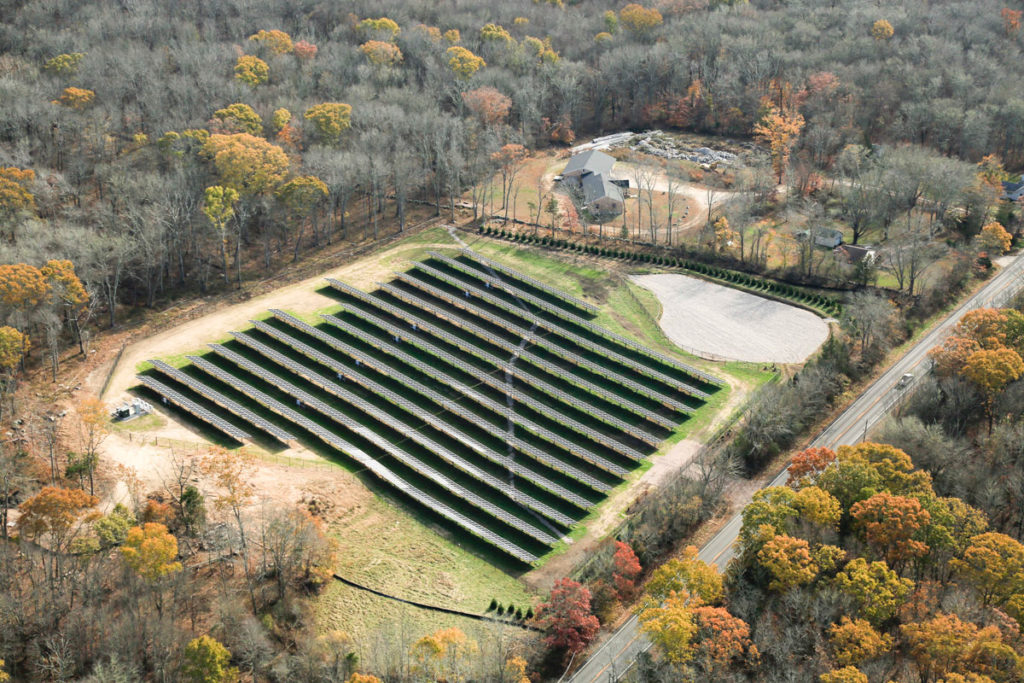By Steve Kearns
Facilities Project Manager
ONE Neighborhood Builders

Steve Kearns, ONE|NB Facilities Project Manager, explains how ‘net metering’ saves money and helps reduce our carbon footprint.
One of the key responsibilities of an asset manager is to save money. Here at ONE|NB, we’ve been able to reduce our costs in many ways, but one that has been particularly satisfying—and helps reduce our carbon footprint—is something called “net metering.”
Net metering is a phrase used to describe a billing method that helps us reduce our electricity costs. In our case, it involves our connection with Green Development LLC, a company that built a solar array in Hopkinton.
With approval from the Public Utilities Commission, a private company called Green Development offered a consortium of nonprofits and municipalities a significant way to reduce their energy costs. They built a solar array that generates electricity, which they sell back to National Grid. By participating in the consortium, ONE|NB and others save 30% on electricity.
At ONE|NB, we manage apartments with 122 electrical meters in common areas. As you might imagine, our costs have risen along with the growing price of electricity in the region. A savings of 30% means that those operating expenses can be used elsewhere, helping us keep affordable housing affordable.

The Hopkinton solar array, from Green Development LLC, is actually three fields of solar panels. Photo courtesy: Green Development LLC
How it works
Essentially, Green Development sells electricity from its solar array back to National Grid. National Grid, in turn, offers a credit of 70% back to Green Development, and the company then offers 30% of those savings to its consortium members.
For the first half of 2021, for example, our direct electricity savings amounted to $4,664. That was 30% of the $15,548 in credits that Green Development received from National Grid.
The process, in some respects, is similar to deals offered to homeowners who put solar panels on their rooftops via solar energy companies. Usually customers pay two bills, one to National Grid, which, in turn offers a credit to the solar company. The consumer also then pays the solar company for the rest of their energy consumed at a reduced rate. In the end, the cost to the consumer, overall, is reduced.
The deal does not apply to tenants in those buildings. They still pay their normal utility bills. The meters being counted toward our account with Green Development are for operating expenses on our buildings.
 Why we care
Why we care
Electrical costs continue to rise, along with the costs of managing affordable housing. This is one of the vehicles we can use to save money and helps us stay financially secure. As an asset manager, we look at every available way that we can save operating costs, and this is one of them.
There are a finite number of meters included in our contract with Green Development, but as new projects get built, we’ve been able to take advantage of solar credits from National Grid on our own. King Street Commons, for instance, has solar panels on its community room, and that helps us reduce costs for outside lighting.
These efforts to save money are not the only ones we are pursuing. Our Sheridan Small Homes was our first endeavor toward having an almost carbon-neutral home–with solar panels offsetting energy costs–and we don’t know whether we’ll fully achieve that, but we’re close. But all these efforts have put energy savings into our consciousness.
I think we, as an organization, want to be sensitive to reducing our carbon footprint as much as possible. These projects help reduce that carbon footprint and at the same time save our organization money so we can offer more affordable housing. Though the amount of money we are saving through net metering and other steps might not be huge, you have to start someplace. Not using gas or fossil fuels to generate electricity for our world is a nice thought, you know?
Steve Kearns has more than 30 years of experience in affordable housing development and management. Before joining ONE Neighborhood Builders four years ago, he worked as the director of asset management for Housing Opportunities Corporation, which manages nearly 1,000 housing units across Rhode Island.

This is one of the sections of the solar array used by Green Development LLC. Photo courtesy: Green Development LLC


